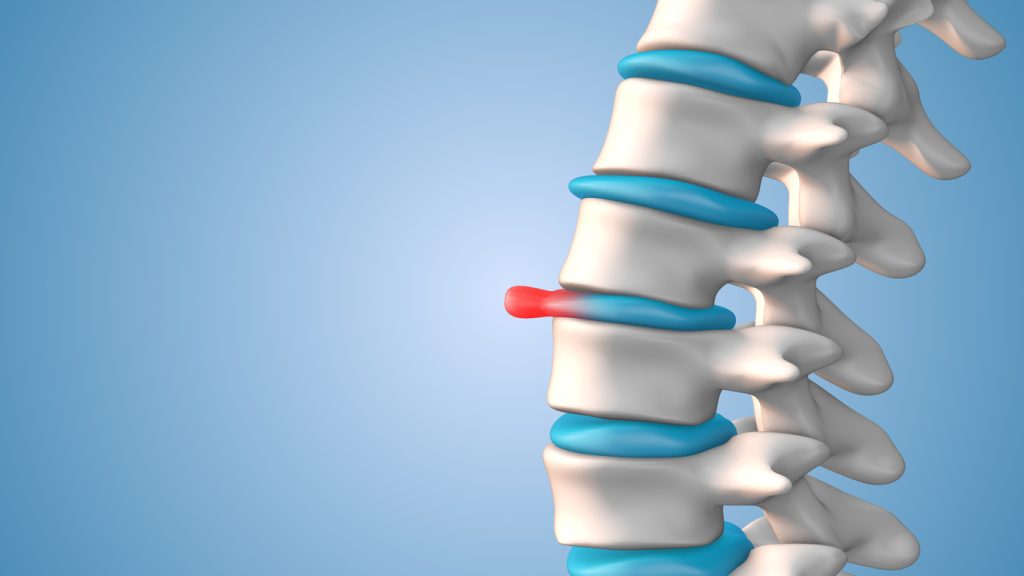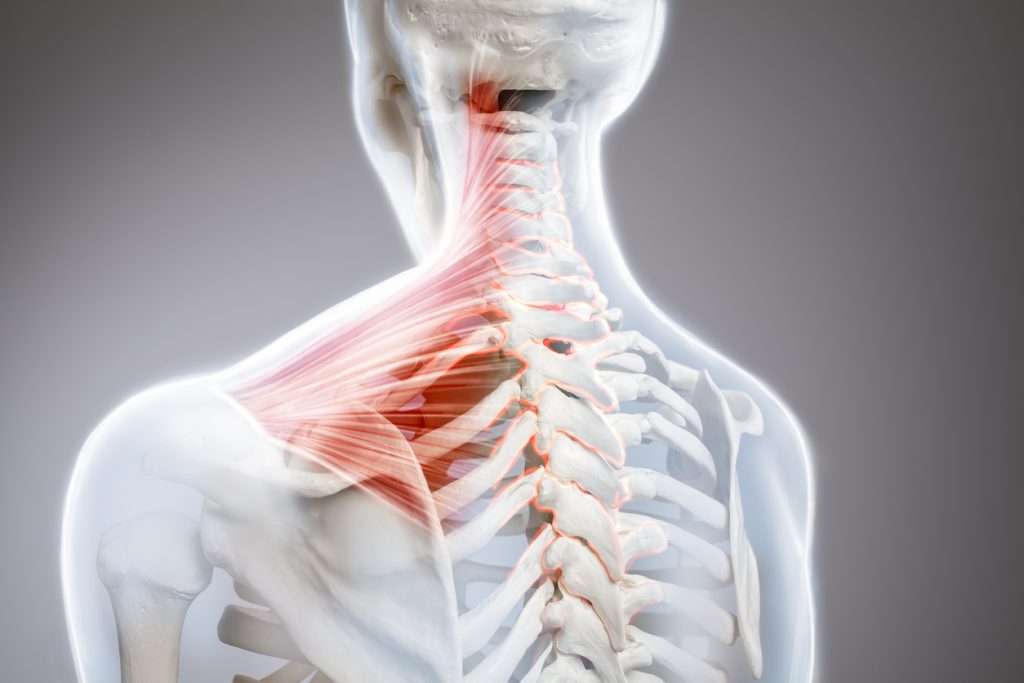A herniated cervical disc is a common cause of neck pain. People between ages 30-50 are most likely to develop the condition, and it tends to be more prevalent in men. Cervical disc herniations most often occur at levels C5-C6 and C6-C7.
What is a disc herniation?

Spinal discs provide separation between the vertebrae and act as shock absorbers. Discs are composed of a tough outer band that surrounds a gel-like nucleus. A herniation occurs when the outer band cracks or tears, allowing the nucleus material to leak out. This puts pressure on the spinal canal or nerve roots. The chemicals in the gel-like center also cause irritation, pain, and inflammation to the surrounding nerves. A herniated cervical disc may be the result of a neck injury or simply from aging discs that degenerate over time.
Who is at risk?
Those who have suffered a sudden stress or trauma to the neck are at risk of disc herniation. This may happen during a fall, an auto accident, sports injury, or a sudden flexion or twisting of the neck. Age is a risk factor, as discs dry out as we age, losing strength and resiliency. Poor posture, an inactive lifestyle, and improper lifting or twisting are contributing factors that put stress on the cervical spine.
What are the symptoms?

Symptoms can range from mild to severe and often affect only one side. Common symptoms include the following:
- Dull, sharp, or burning pain in the neck or between the shoulder blades
- Pain that radiates into the shoulder or down the arm to the hand or fingers
- Numbness, tingling, or weakness in the arm, hand, thumb, or fingers
- Elbow or wrist weakness
- Headaches
Nonsurgical Treatments
Most cervical disc herniations can be successfully treated without surgery. Many cases will show significant improvement in about six weeks. The following nonsurgical treatments may be recommended:
- OTC medications – Anti-inflammatory medications reduce pain and swelling; muscle relaxers treat spasms.
- Narcotic pain medications – May be prescribed for acute pain
- Heat/cold therapy – Heat relaxes muscles and improves blood flow; cold relieves pain and inflammation.
- Physical therapy – Exercises build strength, flexibility, and endurance; massage and spinal manipulation; neck traction
Surgical Treatment
Surgery is sometimes necessary when conservative treatments have not worked. Anterior cervical discectomy is the most commonly recommended procedure.
Atlanta Brain and Spine Care
Our neurosurgeons offer patients access to some of the world’s most advanced treatments and procedures in five convenient metro Atlanta locations. Contact us to schedule a consultation.


